Ricitos de Oro

For 6 days each year the people of Seville celebrate all things Andalucian, women wear the traditional flamenco dresses (faralaes), and the men wear traditional short bolero jackets and hats (cordobés). I landed into Seville in the beginning of May and into the middle of Feria: what a treat! As I hauled my backpack around the city, sweltering in 34degree heat I wondered how the women could bear to wear the skin-tight polyester multi-layered dresses… I admired their endurance… (and I got a chance to wear one a few days later…).
The ladies of Los Portales celebrating Feria
Before my bus north to Castileblanco de los Arroyos, the nearest town to Los Portales; my next eco-community, I had an evening and half a day in Seville. Obviously that is not a lot of time but I was lucky to get a centrally located hostel and spent a few hours exploring the old city. Alongside the festivities and fantastic colours of feria, I was heartened and inspired by the funkiness and ad-hoc-ness of eco-design trends in the city: cafes using lots of fun recycled materials, collectives with hot-desking and the hostel where I stayed which had good awareness of the main eco issues, water and electricity conservation, recycling and the use of recycled materials. The fiery sparkly creativity of the Spanish, that I could feel in the city was a change from Denmark, where the Danes are so wonderfully rock steady and grounded! I love them both!
Cafe in Sevilla
So, the community of Los Portales is located 15km from the town of Castileblanco e los Arroyos, which is 50km north of Seville, and in the foothills of the Sierra Morena. Due to heavy traffic in Seville with Feria my bus arrived late, and without my knowing, dropped me at the wrong bus stop. All I knew when I arrived was that there was no one to meet me. And I very quickly I realised I had no phone number for the community, and no internet access, so I needed to find out how to get to them or how to get them to me. I walked from the bus stop to a local bar and had a strange moment, when I met the resident waiter, as I realised that I could remember barely 5 words of Spanish…my mouth moved but a gnarly sort of gutteral Spanglish came out. I managed to look lost and mustered up a pathetic: ‘tienes WiFi?’ And I finally got online and managed to message the community to say I was in town. After I had done what I could, I sat and watched the world go past in this little Spanish town and waited to see what might happen. I wondered if it was a long walk to the community and in what direction, or if hitching was something that was done in these parts and, if I could find a skateboard and some string to move my backpack. But, I didn’t have to set out walking as the Los Portales search party (Jaime) tracked me down and he became the second victim of my barbaric attempts to express myself in Spanish: this time many ‘gracias’s and earnest facial expressions of appreciation. On the car journey to our destination with Jaime and his four kids I promised myself that I would improve my linguistic skills!
I felt at home in Los Portales straight away, I was warmly greeted and felt the same warmth in the buildings and surrounding land. Most of the buildings on site are built by the community – the main one being a beautiful example of how to design in this climate; with large windowless walls to the outside of a calm shaded courtyard that is overlooked by a peripheral glazed corridor. The community stands on over 200hectares (300acres) of land. Most of which is left wild and covered with Rock Roses, wild grasses, and Holm Oak, with wild boar and deer roaming freely. Seasonal rivers appear and disappear in the landscape with waterfalls and pools in wetter seasons. The land provides food for: the community’s herd of goats (which provide milk for cheese and yogurt), their three horses and donkey and also firewood for heating in the winter. The farm and garden are made up of orchards of fruit trees including olive trees, which are pressed to make the community’s olive oil. The land provides hay and cereals along with honey from their many beehives scattered around the land. The vegetable garden and poly-tunnels provide year round vegetables, fruits, herbs and medicinal plants using a combination of organic, biodynamic, poly-cropping and permaculture approaches. It has been lovingly cared for over 20 years by Eugenia and rolling teams of volunteers, and it is a credit to the community: with bed upon bed of abundance: aubergines, tomatoes, pumpkins, watermelons, asparagus, all sorts of beans, cabbage, chard, spinach, vines, salads, rhubarb, leaks, onions, garlic, grapefruit, oranges, strawberries…!
Planting out tomatoes
Three horses
Energy-wise this is the most exciting community for me so far as they exist totally off grid, which means that they provide all of their own electricity. This is done mainly from solar (obviously) and wind, with two recent wind-turbine having been built from scratch on site! The house I stayed in was beside the turbines and I would hear them whirring away at night.. the sound is soothing music to my ears.. it is the sound of people taking a stand,doing something different and making a change for the future generations… it is a direct shout into the future: We care about the world we are leaving you, we love you! (I am a windmill fan).
The main issue with renewable energy, when you are generating off-grid, is the storage of electricity in the form of batteries, which is needed for night-time supply and as a buffer for duller stiller days when there is little generation.
Wash our way to fitness: a new ‘spin’ on the ‘washing cycle’
Wind turbine (thanks to Marie-Laure and Cris)
Photovoltaic panels
The practicalities of living off grid: batteries for energy storage
Water (or the lack of it) is a major issue in this part of the world – the heat and dryness of the summers challenge farmers and gardeners alike. The community has their own water supply through natural wells and they carefully garden using mountains of straw and mulch to reduce evaporation after irrigation, and to keep the soil and plants moist and nourished. Also throughout the garden, black gauze sun screens are raised during the summer months to protect plants from the ferocity of the sun. The community has adopted ley-line plan methods to create irrigation canals throughout the land and is currently exploring an holistic land regeneration plan to help reverse the desertification that is taking place throughout the farm.
Irrigation and sun shading in the garden
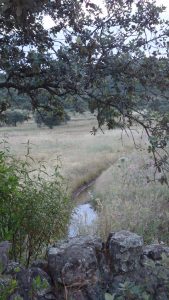
Canals in the landscape following leylines
I worked as a wwoofer (a Willing Worker On an Organic farm) in the garden mostly while I was there, helping out with cleaning as required. Our workdays started with breakfast together and a community check in and meeting at 7:30am. We worked from 8-10:30 and stopped for a break/second breakfast, which was by far my favourite meal as we usually had an abundance of fresh strawberries from the garden and fresh yogurt from the dairy. Then we worked from 11-1 and had lunch together. Depending on how hot it was we would return to the garden at 3 or 5 pm for another 1.5 hours. Then I would go for a swim in the lake and we would have diner (la Cena) at 8pm. This schedule was easy to get used to: getting up early watching the sunrise and meditate, two breakfasts, working in the sunshine in the garden and dinner outside in the warmth!
Dining in the shade in the courtyard
The Los Portales community was created as ‘a medium for creation and evolution’; the philosophies of Carl Jung inspired the founders. An underpinning belief of the community is that dreams allow us to access, know and transform our subconscious. This is not a new idea; indigenous groups throughout the world look to their dreams for guidance and healing for individuals and for all the community. I have spent time in Ecuador with the Achuar and Sápara people who wake early each day to discuss their dreams and decide from them what they will do for the day, and in Guatemala in 2009 I spent 3 months working with dreams and meditation as a means of healing. From these experiences along with my interest in Jung and transpersonal psychology I was curious to see how a western community engaged with their dreams. The community members meet once a week for dream sharing and they have one to one sharing sessions using deep listening techniques. Wwoofers and other volunteers meet separately for a dream session about once a week. I had really interesting dreams while I was there, which was exciting, but I have to admit I was disappointed with the lack of clarity in the dream sharing’s. I understand that this work really unfolds over many months and that it can be difficult to get a sense of it in a month. I recognised from conversations with members that these ongoing sharing’s really bring a richness into their lives and into the lives of community, and I see it as another inspiring example of the individuality of each community that I have visited; each different constellation of people brings a new type of community into being; each with a different flavour, each honouring the variety of our co-creative abilities.
Los Portales and the lake
Los Portales was my 8th Community and although I feel that I can’t have a favourite, I have been assessing the communities as I go, and taking note of what appeals and what doesn’t: like Goldilocks looking for her perfect breakfast. I have been noting the types of gardens and whether the communities provided all of their own food, how inclusive they are of volunteers, whether they include some type of spiritual practices… some had great gardens but they weren’t big enough to provide enough food, others provided the food but had no spiritual practice… Los Portales had everything I (personally) was looking for including access to wild and stunning nature and peace and quiet: no sounds of cars and traffic – mostly I could just hear the sound of the swallows and sparrows during the day and the frogs in the evenings. So far it comes closest to perfect for me… but I’m still open to learn more!
The lake was by far my favourite place: I remember the first day that fellow wwoofer Tne and I took out the ‘boat’ (a few large blocks of polystyrene held together with strips of rubber, a sheet of clear plastic, a few planks of timber…. and faith) We had on oar and an immense desire to be in the water. We rowed out to the middle and leapt into the divine cool water! What a joy, with the swallows flying overhead, a clear blue sky, strong sun and the feeling of freedom! Each day after that we swam, and managed to rope in a number of community members to dare to swim amongst snakes, turtles, fish and sanguihuela’s (urm…little leeches). It was a joy after work each day to wash off the dust and sweat from working in the garden. Together we conducted careful boating experiments on how many people we could get on the raft. One day we managed three before it capsized.. but we did get it up to four.. But I’m not sure if it counts, as the raft was pretty much totally submerged with four hysterical laughing people on top. They were good days.

The wonderful ‘barco’
wwoofer’s in the lake..
So coming back to my intention behind my journey; to bring my creativity into community: I’m learning that this happens in so many more subtle ways than I had thought about before, like in inspiring conversations that create something new in the world…and that the new thing might be laughter: I have learned a lot about my capacity to laugh and how fantastic it feels to see others laugh, to share laughter, to bring laughter. Each place that I have been I have laughed so much with the people that I am with: wholehearted fun beautiful belly laughs through creative story and joke telling.
And I have continued to explore communities as a place to offer Movement Medicine classes. In Los Portales I gave my first classes in Spanish……Sí! Even with my feeble grasp of the language I am proud to have faced my fears and tried it. I dared, and I received beautiful support with my translations and I learned valuable lessons in the power of simplicity and clarity in offering a class. And I learned that you can always surprise yourself, and laugh at yourself, and marvel at others’ capacities to tolerate your language learning curve…
So as I promised myself I did improve my Spanish, through daily study on Duo Lingo and listening to old recordings by Michel Thomas and regular conversations, and laughter with our lovely circle of friends. My biggest issue in speaking is my fear of making mistakes. I released some old demons around this issue and I just wonder what is so wrong about our educational system that I, an intelligent well educated woman (if I do say so) could not speak another language after years of learning. In other countries folks mange to nail down three and four languages by the time they’re teenagers while I struggle with one! I recognise that having English as a first language is great, but also a curse, as everyone wants to practice their English, making it difficult, at times, to immerse in another language. But I recognise that immersion is the only way for me; and I hope I will have total immersive opportunities in my upcoming journey to Colombia to further develop my Spanish skills.
I so enjoyed my time with my fellow wwoofers, EVS volunteers and community members especially the wild and wonderful Tne, Naomi from Barcelona, Anto from Napoli! Together with Marie-Laure (the wonderful mind behind the wind turbine at Los Portales and fellow lake explorer), Guru Jenny who helped me so much to get a grasp of the Spanish language, and Fran the horse whisperer and raft capsizer! We made up a wonderful laughing storytelling group and thinking about us now sitting outside in the courtyard in the evenings weaving story threads, I have to admit to feeling nostalgic.
I want to express my whole hearted thanks to all of the community of Los Portales, to my aforementioned friends, and to Neus, Jose Antonio, Gaudi, William and Eugenia for wonderful dances, Chris and Emily for openheartedness, Roselea and Kevin, Meryl and Julia and Gali, Francois, Jaime Jessica and 4 kids, Belem and Jason, Pablo, Andreas and Lisby for wonderful food! I will be back 🙂
This is me: Ricitos de oro: Goldilocks 🙂
– – – – – – – – – – – – – – – – – – – – – – – – – – – – – – – – – – – – – – – – – – – – – – – – – – – – – – – – – – – – –
My project of exploring community is fully supported by my creativity through the sale of my art and by community through crowd funding. If you would like to support me on this journey you can check out my art on www.sineadcullen.com or make a donation on my Crowd funding https://www.gofundme.com/LetsCreate
References and links for subjects included in this blog
https://www.pachamama.org/blog/finding-home-a-journey-to-the-heart-of-pachamama
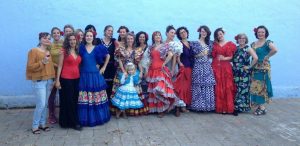

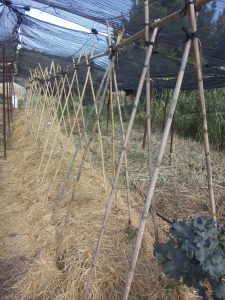
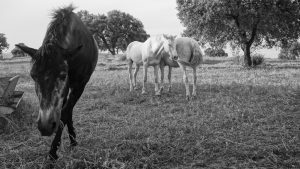

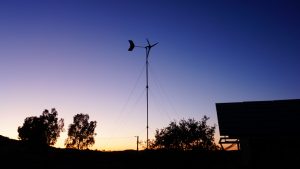


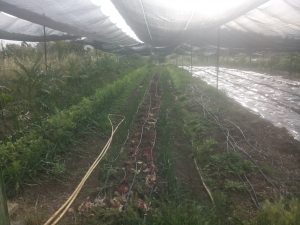

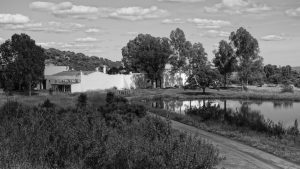
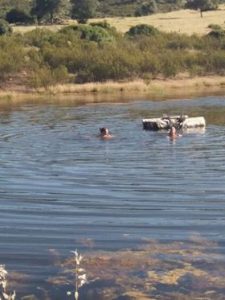

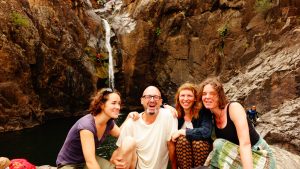

Recent Comments